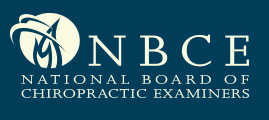Chiropractic Identity: A Neurological, Professional, and Political Assessment
SOURCE: J Chiropractic Humanities 2016 (Jul 20); 20: 1–11
Anthony L. Rosner, PhD, LLD (Hon)
Private Practice
Watertown, MA
Objective The purpose of this article is to propose a focused assessment of the identity of chiropractic and its profession, triangulating multiple viewpoints converging upon various aspects and definitions of neurology, manual medicine, and alternative or mainstream medicine.
Discussion Over 120 years since its inception, chiropractic has struggled to achieve an identity for which its foundations could provide optimal health care. Despite recognition of the benefits of spinal manipulation in various government guidelines, advances in US military and Veterans Administration, and persistently high levels of patient satisfaction, the chiropractic profession remains underrepresented in most discussions of health care delivery. Distinguishing characteristics of doctors of chiropractic include the following:
(1) they embrace a model of holistic, preventive medicine (wellness);
(2) they embrace a concept of neurological imbalance in which form follows function, disease follows disturbed biochemistry, and phenomenology follows physiology;
(3) they diagnose, and their institutions of training are accredited by a body recognized by the US Department of Education;
(4) they manage patients on a first-contact basis, often as primary care providers in geographical areas that are underserved;
(5) the spine is their primary — but not exclusive — area of interaction;
(6) they deliver high-velocity, low-amplitude adjustments with a superior safety record compared with other professions; and
(7) they use a network of institutions worldwide that have shown increasing commitments to research.
You can explore other materials like this @
The LINKS Section and the:
Conclusion This article provides an overview of chiroractic identity from 6 points of view:
(1) concepts of manual medicine;
(2) areas of interest beyond the spine;
(3) concepts of the chiropractic subluxation;
(4) concepts of neurology;
(5) concepts of mainstream or alternative health care; and
(6) concepts of primary care, first-contact provider,
or specialist.
Key indexing terms: Manipulation, Spinal, Neurology, Chiropractic, Complementary Therapies, History, 20th Century
From the Full-Text Article:
Introduction
From its origins in 1895 with DD Palmer’s original focus on magnetic healing, [1] chiropractic identity has been beset with the challenging task of keeping up not only with clinical and scientific observation but with political trade winds involving public perception and the marketplace of health care.
Originally, DD Palmer viewed the body from a more mechanical viewpoint, like a machine, for at the turn of the 20th century he indicated that:
| “A human being is a human machine and, like a machine, would run smoothly, without any friction, if every part was in its proper place. If every bone, nerve, and all blood vessels, muscles, etc., were just right, there would be nothing wrong. A Chiropractic looks the human machine over, and finds what parts are out of place, why the blood does not circulate freely to all parts, why the nerves cry out with pain. Disease is the effect or result of some part of the body being disarranged. To put them in their proper place, would give the diseased person ease, and allow Nature to rebuild without being obstructed”. [1] |
With that in mind, DD Palmer paid particular attention to the nerves:
| “The human body is a bundle of fine sensitive nerves, passing over, under, and between the two hundred bones and many muscles and ligaments. These nerves are liable to be pinched, strained, stretched, or pulled out of place by the displacement of any one of the bones, muscles or ligaments, causing any of the many nerve diseases.” [1] |
It was from this origin that the popular but often misinterpreted concept grew that doctors of chiropractic dealt with “bones out of place,” the locus of such derangements being the spine.
Wrestling with what would become a perennial question of chiropractic identity nearly a century later, the World Federation of Chiropractic (WFC) organized 2 years of workshops, driven in part by a survey conducted by Manifest Communications that emphasized what had become a disparity between what the public and doctors of chiropractic commonly perceived as chiropractic treatment. By a wide margin, the survey and various studies suggested that doctors of chiropractic were managing primarily musculoskeletal problems with emphasis upon back pain. [2-5]
Taking these findings to the WFC Congress in Sydney, Australia, in June of 2005, the Identity Consultation Task Force concluded the following:
Read the rest of this Full Text article now!






Leave A Comment